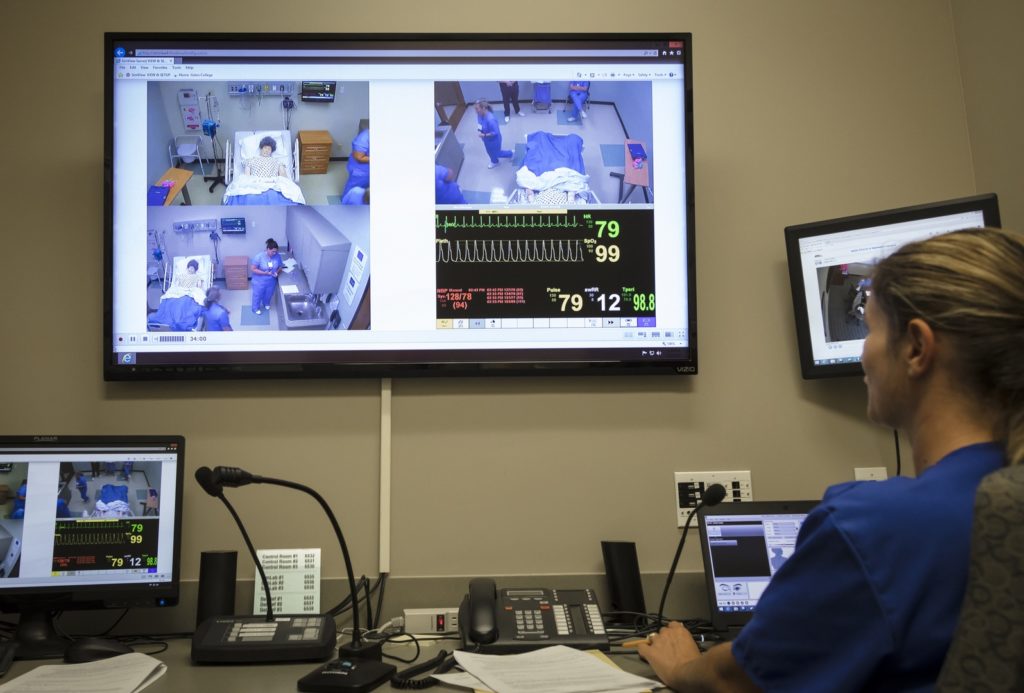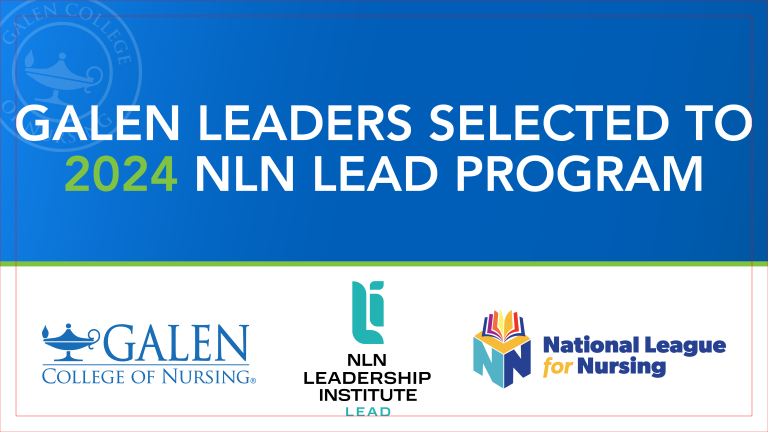Gaining the skills and confidence a nurse needs to work with patients requires a lot of hands-on experience. But you can’t start out practicing complicated procedures on actual patients in distress. So Galen College of Nursing has made a major investment in advanced technology in their simulation labs. These sim labs provide the most realistic way for students to safely practice the medical procedures they will someday perform on actual patients. The labs are now available to students at the Louisville, San Antonio, and Tampa Bay campuses.
Galen students get a head start.
These sim labs give Galen students a jump on hands-on clinical learning. In fact, depending on the program, some students start simulation training as early as the first quarter. That’s much sooner than in most other institutions. The types of procedures practiced in the lab correlate with the subjects the students are learning in class.
These aren’t your mother’s sim labs.
As Patrick Caufield, Simulation Technician at the Louisville campus explained, “With advances in computers, batteries, and wireless technology, what used to be a static, lifeless mannequin now has vital signs like heart rate and blood pressure. It can breathe, blink, sweat, convulse, give birth, bleed, cry and more. Battery and wireless improvements also allow us to untether the mannequin from the bed and place it in a chair, hallway, a car, or even move it around from location to location during a simulation.”
Who are the patients?
Students get to work with infant, child, and adult male and female mannequins, as well as with the equipment a nurse would typically use for the patients care. Galen even has a female mannequin that gives birth in an extremely realistic fashion.
What kinds of procedures do students get to do?
Galen attempts to simulate in the labs just about anything a nurse would face on the job. Students perform patient assessments; insert feeding tubes, breathing tubes and catheters; read heart rhythms; deliver babies, set up IV lines and more. According to Caufield, a typical simulation day is between four and eight hours depending on the complexity of what is being simulated.
The simulations are incredibly realistic.
“We make every effort to make the simulation seem as real as possible,” said Caufield. “Any procedure students need to perform is done just like it is done on a person. In addition to the high-tech simulators, we also apply special effects makeup and appliances when needed. There is no “pretend there is a bruise or wound there.” If there is supposed to be a bruise or wound, then one is put on our simulator to interact with.”
To make things even more life-like, instructors can speak through the mannequin to describe symptoms or react to the students’ care. The conditions of the mannequins can also improve or deteriorate depending on the care they receive.
What happens in the lab stays in the lab.
When asked to describe a few unexpected or surprising things that happened during simulations and how students handled them, Caufield gave a response that will put future students feel at ease. “To preserve the safe, friendly learning environment of our simulations,” he said, “We don’t discuss what happens in simulation outside of simulation.”
Learning by doing.
In the scenarios, students face in these labs, they have the opportunity to learn in a hands-on way, as well as to react and solve problems in real time. Their work in these labs is an essential complement to the knowledge they gain in the classroom. It’s a great way to prepare future nurses and, equally important, to give them the confidence they need to provide excellent care for patients in the real world.





